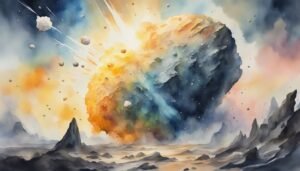Are Humans Aliens? Unraveling Our Cosmic Origins

The pursuit of extraterrestrial life is intertwined with the discovery of habitable worlds beyond Earth.
Space exploration, studies of celestial bodies, and theories related to the universe and its phenomena.

The pursuit of extraterrestrial life is intertwined with the discovery of habitable worlds beyond Earth.

The Big Bang Theory posits that the universe started from a high-temperature, high-density state and rapidly expanded billions of years ago.

Black holes are regions with immense gravity; collisions create gravitational waves, crucial for studying cosmos dynamics.

Betelgeuse is a red supergiant star in Orion, known for its size, temperature, red hue, and brightness variability.

Asteroids pose a potential but rare threat to Earth; NASA and other agencies track these objects, developing defenses like DART to mitigate potential risks.

Asteroids are part of the solar system, intersecting Earth's orbit occasionally, leading to impacts that can range from small to catastrophic.

The universe's first moments started with a singularity, then the Big Bang triggered by quantum fluctuations, followed by rapid expansion during the inflationary epoch, and the emergence of different epochs.

Exotic form of matter with quarks behaving differently under extreme conditions, potentially found in dense environments like neutron stars.

Revolutionizing science and technology through innovative practical uses of quantum theory.

Closest known black hole, 1,600 light-years away in Ophiuchus, stellar-mass, detected by effects on nearby stars, challenging traditional detection methods.